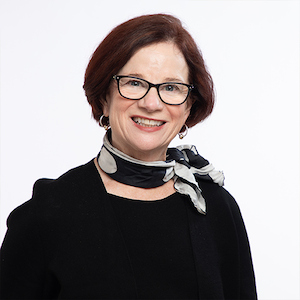In the world of fund development, endowment programs usually get the least amount of attention. This is a shame, because these gifts often represent a donor’s sense of legacy. Why do we put off the cultivation of endowment prospects? I propose that many of us are laboring under false beliefs about developing endowment program. It’s time to bust some myths!
MYTH: Now is not the time
2020 showed us that we all must be prepared for the next crisis. And donors agreed! Many charities across the country saw a steep increase in bequest commitments and other legacy gifts.
One of the adages in planned giving is that a bequest is often made around a life event. This past year, the entire world went through a life event simultaneously! The gravity of the Covid-19 crisis has donors contemplating the role charity will play in their legacies. And the pandemic has hit against the backdrop of a massive demographic and economic shift, as baby boomers age and prepare to pass trillions of dollars on to the next generation.
So be sensitive in your approach to the topic of planned giving, but don’t ignore it completely. And it’s not too late: a recent Gallup poll reports that 25% of people hope to increase their charitable giving in 2021.
MYTH: People only think about a planned gift to our endowment when they need a tax advantage.
60% of endowment gifts are bequests, which do not provide current tax advantages.
MYTH: You need to have a staff person who is a lawyer to run an endowment program.
You don’t need to be a financial planner or estate attorney. You just need to do what you do best with all of your donors: build a relationship. If you do that, plus build relationships with a few friendly advisers (accountants, lawyers, financial planners) who are versed in estate planning, you can create a successful endowment program. As the donor learns about your vision, they can work with a trusted adviser to build the right gift plan for them.
MYTH: Only older adults are prospects for a gift to our endowment.
Recent research from FreeWill.com shared that people aged 18 to 24 are far more likely to make a bequest than any other age group. While the value of their gifts tends to be significantly lower than other age groups and their gifts come to fruition far into the future, they clearly want to support causes they care about.
Plus, younger adults will increase in net worth as they age. If you steward these young planned giving donors, you may see consistent annual gifts and larger bequest commitments from them as they update their estate plans throughout their lives.
Also, be mindful of all of your prospects. the number of bequests made by women during 2020 jumped by six percentage points over 2019. Steward both people in a couple, not just the one who has a stronger attachment to your organization.
MYTH: It takes time to secure complicated gifts from the wealthy.
The average gift size to an endowment is between $25,000 and $75,000. In 2020, the average bequest was $60,600. That means a 7-figure endowment gift is not the typical gift. Most gifts come from middle class people who had assets such as a life insurance policy, retirement fund, or the value of their home to pass on.
MYTH: Administration is costly.
70% of gifts are outright and bequests, which means there’s nothing to administer from your end at all. Once gifts are secured, you may incur investment-related fees based on your policy. You can also consider using a Community Foundation to “house” your funds. They’ll assume the administrative burden often for modest fees.
MYTH: Endowment funds have to be huge and we can’t raise that much money.
Your goal should be to secure two times the amount of your annual budget.
An endowment that is twice your operating budget with a distribution policy to take 5% out each year to spend on operations, will provide income of 10% of your operating budget each year.
Let’s run the numbers:
- Say your operating budget is $1,000,000.
- Two times $1,000,000 is $2,000,000
- 5% of $2,000,000 is $100,000.
- $100,000 is 10% of your operating budget.
What endowment myths have you held on to for far too long? Let us know in the comments below!
For our YMCA friends: Robyn is presenting at NAYDO 2021 on building an endowment program. Join her session during Round 2 to learn more and ask additional questions.

